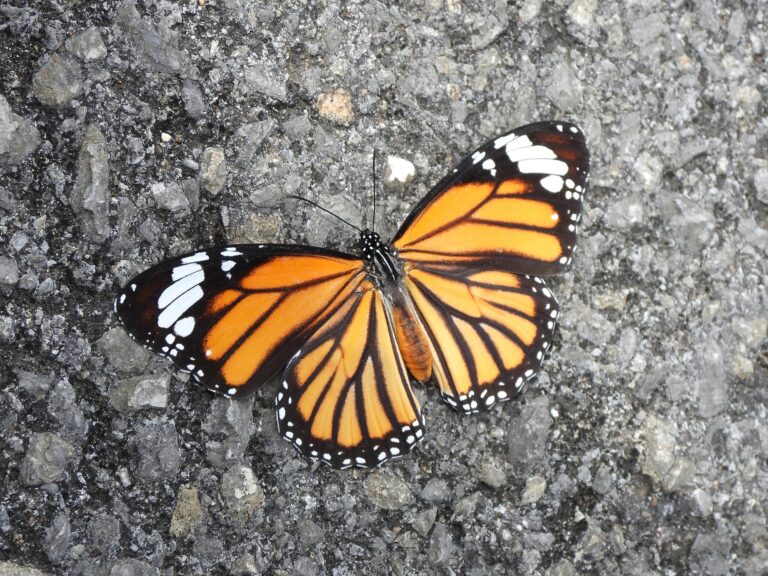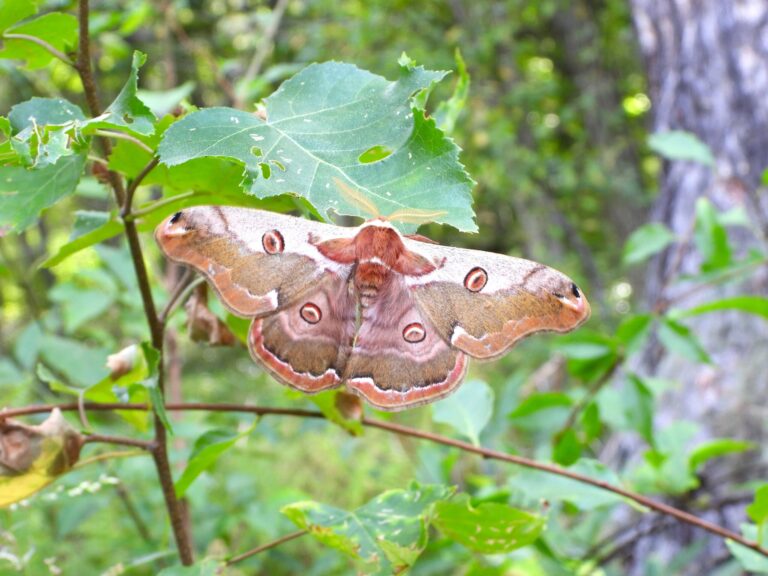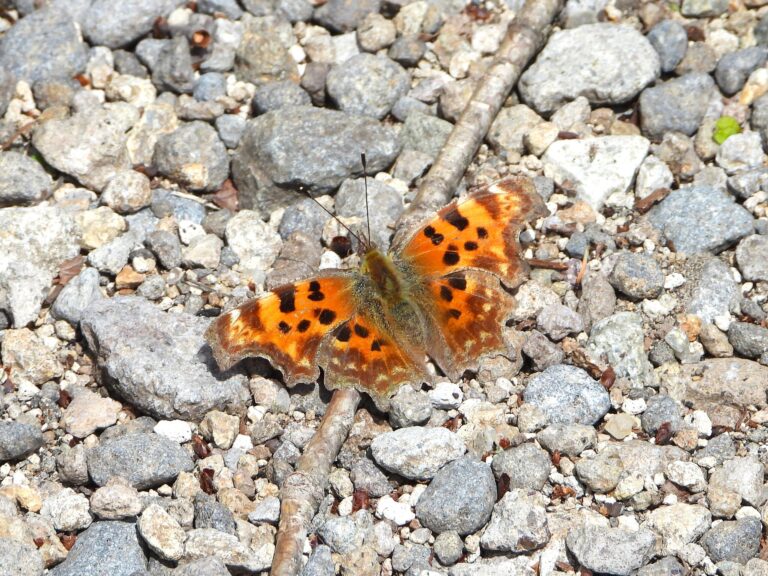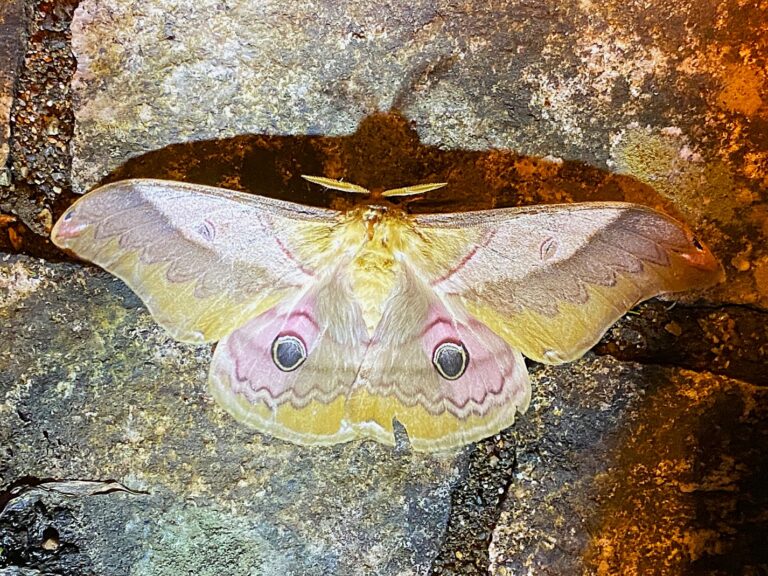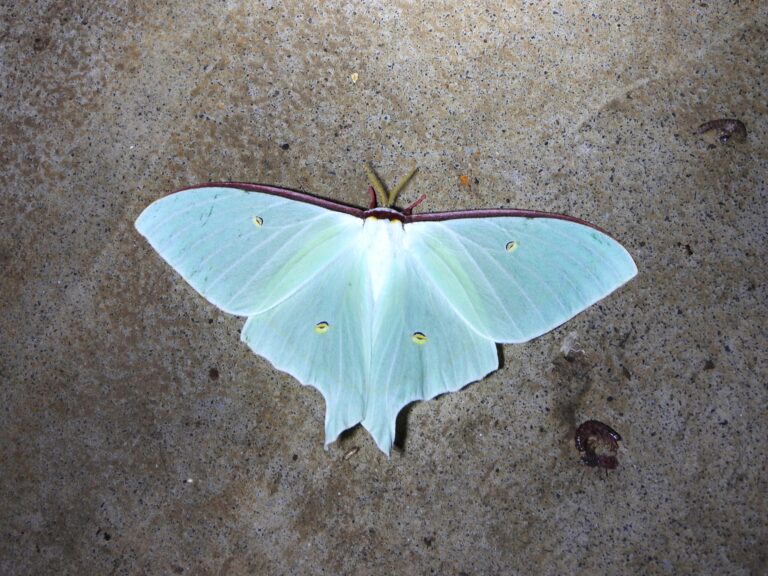Jankowski’s Silkmoth (Rhodinia jankowskii) – Wildlife of Japan
Introduction
Jankowski’s Silkmoth (Rhodinia jankowskii) is a large autumn-flying moth of the family Saturniidae.
Closely related to the Usutabiga (Rhodinia fugax), it is easily recognized by its darker coloration and the irregular shape of its translucent wing spots.
This species appears in the cool mountain forests of Japan from late September through October, marking the end of the silkmoth season before winter arrives.
Appearance
Adults have a wingspan of about 80–90 mm.
Males are smaller and possess broad, comb-like antennae, while females are larger with slimmer antennae.
The forewings are rounded, featuring a translucent patch that is distorted rather than perfectly circular—a key characteristic of this species.
The overall coloration is dark brown to olive-black, sometimes with faint pinkish reflections in the female.
The thick, furry body helps this moth remain active in the cooler temperatures of autumn nights.
Habitat & Distribution
This moth inhabits cool, mountainous forests across Japan, excluding Okinawa.
Two regional forms are recognized:
- R. jankowskii hattoriae – Honshu and Shikoku
- R. jankowskii hokkaidoensis – Hokkaido
Populations from Honshu tend to have darker wings than those from Hokkaido.
It avoids warm lowlands and is most often seen along mountain roads and ridges at 500–800 m or higher, especially in regions with mature deciduous forests.
Where to See in Japan
Jankowski’s Silkmoth can be observed in Hokkaido and the mountainous areas of northern and central Honshu.
The flight season peaks from late September to mid-October.
Adults are attracted to artificial lights and can be found resting near lamps, forest facilities, or mountain lodges after dusk.
Because of its preference for cooler air, sightings are rare in lowland or urban areas.
Behavior
This species is univoltine, producing one generation per year.
Adults emerge in autumn and live only a few days.
Like other silkmoths, they have reduced mouthparts and do not feed.
Males are active flyers searching for females, while females remain relatively stationary after emergence, releasing pheromones to attract mates.
After mating, eggs are laid on or near host plants, and the adults die soon after.
Diet
Larval Stage
Larvae feed mainly on Phellodendron species (Amur cork trees) belonging to the Rutaceae family.
This restricted diet contributes to the species’ limited distribution.
The larvae develop through summer and pupate in strong silken cocoons attached to twigs or branches.
Because they require cool, humid environments, rearing them in lowland conditions is difficult.
Adult Stage
The adults do not feed; their short lifespan depends entirely on the energy stored during the larval stage.
Reproduction
Adults appear from late September to early October, mate quickly, and females lay eggs on host plants.
Eggs overwinter and hatch the following spring.
The species completes its life cycle once a year, synchronized with the seasonal rhythm of mountain forests where autumn arrives early and winters are long.
Conservation
Jankowski’s Silkmoth has a restricted distribution and a narrow ecological niche.
Habitat loss, forest management, and climate warming could threaten its survival, especially in southern populations.
Although it is not listed as nationally endangered, several prefectural records classify it as “Near Threatened.”
Protecting cool mountain forests and host-plant trees is vital for sustaining local populations.
Author’s Impression
Jankowski’s Silkmoth is, in my view, one of the hardest silkmoths to encounter in Japan.
It inhabits only high-elevation forests, far from ordinary observation spots, which makes every sighting a special experience.
If you are lucky enough to see one fluttering through the cool autumn air, consider it a rare and precious moment in Japan’s mountain wilderness.



